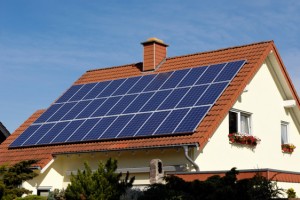
That’s why I thought this blog post at Clean Technica did a marvelous job at clarifying the issue in a simple, clear way.
To put it in a nutshell, renewable resources accounted for 11% of U.S. energy production. The figure was culled from the Monthly Energy Report compiled by the Energy Information Administration and refers to 2010.
As the Japanese nuclear disaster continues to mushroom into a Chernobyl style catastrophe, it is good to hear that nuclear power’s share of the total dropped to 19.6% in 2010 from 20.2% of the total electricity net generation. Not much, but at least it went down.
Biomass and biofuels continue to lead with 51.98% of the clean energy total, followed by hydropower at 30.66%, wind (30.66%), geothermal (4.68%) and solar (1.38%). All of these categories have experienced growth between 2009 and 2010.
Wind increased by 28%, biomass and biofuels did by 10% while solar and geothermal rose by 4% each. Hydropower dropped by 6%, but that’s not a bad thing since hydro, although a renewable sources of power, does have a significant environmental impact. (include link).
The figures above refer to energy as a whole, including transportation. In terms of renewable power for electricity generation, renewables made a significant impact. In total these accounted for 4.08% of the net electric generation (excluding hydro) and 10.32% (including hydro). Of the clean energy total, wind accounts for 56.3%, biomass accounts for 33.6%, geothermal accounts for 9.3% and solar 0.8%.
Solar is the one who saw most growth at 45.8%. It was followed by wind (28.1%), geothermal (4.4%) and biomass (3.7%).
Hopefully, when the next report is out, the renewable energy figures will be even higher.






It’s really important for people in the United States to try to find some of their own resources that are stable and won’t cause a natural disaster. Learn more from this video I found on YouTube: http://youtu.be/OUYrnRji1pI
Energy resources are becoming few every year. Its good to have modern and economical ways of generating electricity at a minimum cost. People should be learning these steps that are useful to save energy and make the world clean and green.
If you are considering attending HydroVision in Sacramento, CA, this July, please maximize your investment by registering for our pre-conference workshop on Monday, July 18. This is a full-day workshop beginning at 8:00 A.M. with a focus on Annex IX and X1. The afternoon discussion will be focused on HAP (Hydropower Advancement Project); DOE and Oak Ridge National Lab are facilitating the development of hydropower best practices for industry professionals by industry professionals. This workshop will provide a highly interactive environment, conducive to discussion surrounding accurate best practices for the industry. There is no charge for admission, but you must register so we can properly accommodate all attendees. http://www.hydroevent.com/index/Best_Practices.html. For more information, email HAP@hydropoweradvancement.com.